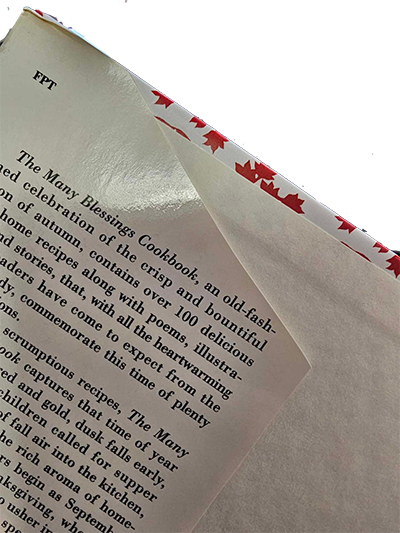You have an analog book.. a printed bound artifact. Now what? Did you know that the book can tell you a lot about its journey to you, just by looking at its characteristics? The words on the pages tell one story, but the book itself tells another.
Clipped Dust Jacket
 Have you come across a book that has a portion of the dust jacket cleanly cut away? That's called a price clip. There are a few reasons for the price clip:
Have you come across a book that has a portion of the dust jacket cleanly cut away? That's called a price clip. There are a few reasons for the price clip:
- The book was a gift, and the giver wanted to remove the price
- The book was remaindered by the publisher, and this is how that particular publisher marks remaindered books
- The retailer wanted to remove the publisher's price, to avoid confusion for their own price.
This does tend to have an effect on the price of the book in the used market. Even if a price-clipped book is new, it should be listed as "very good" at best.
Deckle Edge
Love them or hate them - you are going to find some books that have deckled edges.
At one time, deckled edges were very prevalent on many books. Before the 19th century, paper was made on a wooden frame, called a deckle. The edges of the deckle would allow the pulp slurry to run off, creating an uneven feathery edge. This edge could be cut to create a block that would then be uniform and smooth, but this was an additional expense in the book making process in a time were books were already prohibitively expensive for most people.
Because of this, books with deckled edges became, over time, to be considered cheaply made. The invention of a paper making machine in the early 1800s was capable of making larger sheets of paper that made the deckle obsolete.
Embossing is the act of imprinting a name of a book owner inside of a book. Embossing uses a special tool, customized to feature the words "From the library of", the book owner's name and sometimes an image. Embossing uses relief to imprint the book: a system of raising or recessing the image and text to create a readable mark, without using ink. Embossed books are usually hardcovers with special meaning to the owner, or special value. The end papers are perfect for embossing, as the end papers are usually made of a thicker weight paper. On occasion I find paperback books that have been embossed, on an interior page. This thins and weakens the already thin paper used in printing most paperbacks, but the imprint has little impact to the text on the page.
ISBN
The International Standard Book Number is a unique numerical identifier applied to commercially published books, becoming standard practice in 1970, but appearing as early as 1965. Before this, publishing houses may have given their books some type of internal identification, but the ISBN standardized identification throughout the industry.
You might be surprised to learn that different printings of books have different ISBN numbers. For instance, your first edition hardback copy of Outlander will have a different ISBN than a copy of the media tie-in of Outlander, with Catriona Balfe and Sam Heughan on the cover.
The original ISBN was a string of 10 digits. Since 2007 the standard is 13 digits. Often these 13 digits match the UPC number, although it's not a requirement.
Fun Fact: If you're searching for a specific edition of book, especially in the instance of a text book, you can type the ISBN into a search engine and receive the exact result you're looking for.
Library of Congress Control Number (LCCN)
The Library of Congress preassigns a control number to a book that may be added to its collection. This number helps locate the book in the Library of Congress database.
Fun Fact: The author and the publisher must be located in the U.S. in order to be eligible to have a work placed in the Library of Congress catalog.
